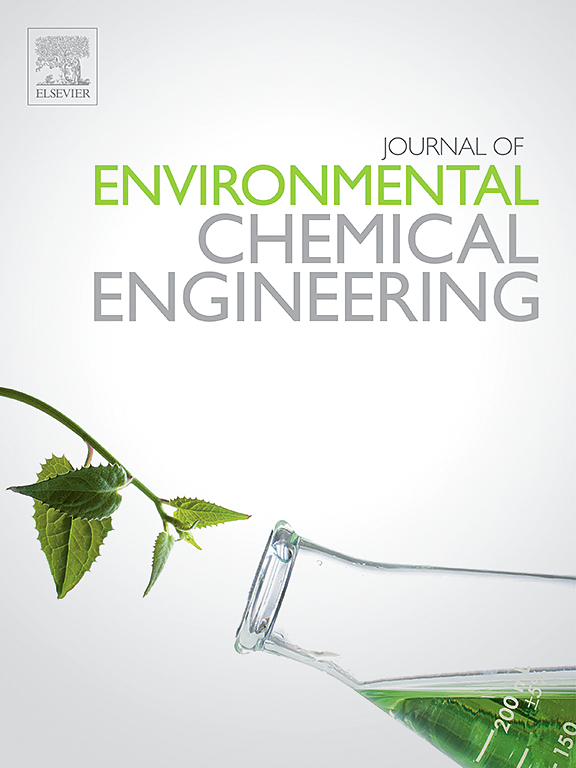Advances in oil sludge separation technology and mechanism at normal temperature: A review
IF 7.4
2区 工程技术
Q1 ENGINEERING, CHEMICAL
引用次数: 0
Abstract
The rapid increase in the global economy and expansion of industry has contributed to the rapid depletion of conventional resources. Oily sludge is a hazardous waste inevitably generated during oil extraction and oil refining. The efficient separation and recycling of its petroleum hydrocarbons has been an important challenge for the petrochemical industry. Despite the rapid advancement of oil sludge normal temperature separation technology, with the popularity of polymer-driven oil and tertiary oil recovery methods, the nature of oil sludge varies and emulsion complexity increases, necessitating urgent investigations into the intrinsic difficulties, process enhancements, and future directions of oil sludge normal temperature separation. The causes of sludge separation challenges including the macroscopic components of the sludge and microscopic interfacial interactions during treatment are systematically summarized. And the main oil sludge separation processes, mechanisms and application scenarios at normal temperature are systematically described in this work. Aiming at the problems of low index of single pathway, high solid content in recovered oil and cumbersome compounding process in oil sludge separation, a few new technologies of oil sludge at normal temperature are proposed, including biosurfactant treatment of oil sludge, environmentally responsive ionic liquid microemulsion treatment of oil sludge, environmentally responsive emulsion treatment of oil sludge, and environmentally responsive magnetic nanoparticle solution disposal of oil sludge. It also suggests new approaches to the oil sludge disposal process, such as targeted regulation of the oil sludge emulsion interface, combined process design of environmentally responsive agents, elaboration of the integrated mechanism of action of oil sludge emulsification and demulsification, and standardization of the oil sludge separation assessment system. The resolution of the above fundamental scientific and technological problems will provide a strong guarantee for the reduction of environmental pollution and the promotion of high-quality development of the petrochemical industry.
常温下油泥分离技术和机理的进展:综述
全球经济的快速增长和工业的扩张导致常规资源迅速枯竭。含油污泥是石油开采和炼油过程中不可避免产生的危险废物。如何有效分离和回收其中的石油碳氢化合物一直是石化行业面临的重要挑战。随着聚合物驱油和三次采油方法的普及,油泥常温分离技术取得了突飞猛进的发展,但油泥的性质各不相同,乳化液的复杂性也随之增加,因此迫切需要研究油泥常温分离的内在困难、工艺改进和未来发展方向。本文系统总结了油泥分离难题的成因,包括油泥的宏观成分和处理过程中的微观界面相互作用。系统阐述了油泥常温分离的主要工艺、机理和应用场景。针对油泥分离中存在的单一途径指标低、回收油固含量高、复合工艺繁琐等问题,提出了常温下油泥处理的几种新技术,包括生物表面活性剂处理油泥、环境响应型离子液体微乳液处理油泥、环境响应型乳液处理油泥、环境响应型磁性纳米粒子溶液处理油泥等。同时,还提出了油泥处置工艺的新方法,如油泥乳化界面的定向调控、环境响应剂的组合工艺设计、油泥乳化和破乳化综合作用机理的阐述、油泥分离评估体系的标准化等。上述基础性科技问题的解决,将为减少环境污染、促进石化工业高质量发展提供有力保障。
本文章由计算机程序翻译,如有差异,请以英文原文为准。
求助全文
约1分钟内获得全文
求助全文
来源期刊

Journal of Environmental Chemical Engineering
Environmental Science-Pollution
CiteScore
11.40
自引率
6.50%
发文量
2017
审稿时长
27 days
期刊介绍:
The Journal of Environmental Chemical Engineering (JECE) serves as a platform for the dissemination of original and innovative research focusing on the advancement of environmentally-friendly, sustainable technologies. JECE emphasizes the transition towards a carbon-neutral circular economy and a self-sufficient bio-based economy. Topics covered include soil, water, wastewater, and air decontamination; pollution monitoring, prevention, and control; advanced analytics, sensors, impact and risk assessment methodologies in environmental chemical engineering; resource recovery (water, nutrients, materials, energy); industrial ecology; valorization of waste streams; waste management (including e-waste); climate-water-energy-food nexus; novel materials for environmental, chemical, and energy applications; sustainability and environmental safety; water digitalization, water data science, and machine learning; process integration and intensification; recent developments in green chemistry for synthesis, catalysis, and energy; and original research on contaminants of emerging concern, persistent chemicals, and priority substances, including microplastics, nanoplastics, nanomaterials, micropollutants, antimicrobial resistance genes, and emerging pathogens (viruses, bacteria, parasites) of environmental significance.
 求助内容:
求助内容: 应助结果提醒方式:
应助结果提醒方式:


